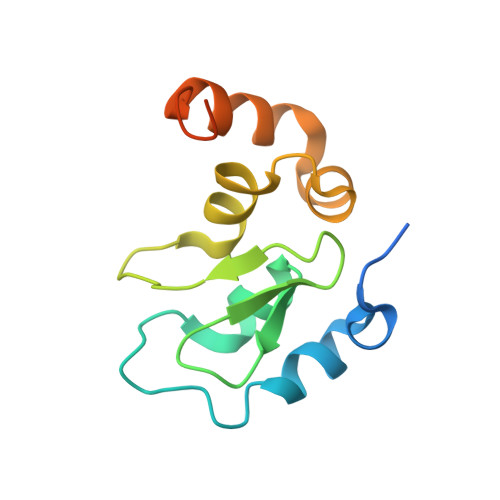Structure-based design and molecular profiling of Smac-mimetics selective for cellular IAPs.
Corti, A., Milani, M., Lecis, D., Seneci, P., de Rosa, M., Mastrangelo, E., Cossu, F.(2018) FEBS J 285: 3286-3298
- PubMed: 30055105
- DOI: https://doi.org/10.1111/febs.14616
- Primary Citation of Related Structures:
6EXW, 6EY2 - PubMed Abstract:
Inhibitor of Apoptosis Proteins (IAPs) is highly conserved negative regulators of apoptosis overexpressed in many cancer cells. Based on their endogenous antagonist, Smac/DIABLO, mimic compounds (Smac-mimetics, SMs) have been developed to inhibit IAPs prosurvival activity, showing promising effects in advanced phases of clinical trials. Since different IAP homologs play distinctive roles in cancer cell survival and immunomodulation, SM-induced apoptosis proceeds through diverse mechanisms. After binding to their BIR3 domain, SMs have been shown to rapidly induce auto-ubiquitylation and degradation of cellular IAPs (cIAPs), thus leading to cell death mainly by activation of the noncanonical NF-κB pathway. For this reason, we started the BIR3-driven design of compounds selective for cIAP1 and with reduced affinity for X-linked IAP (XIAP), in order to focus SMs antitumor activity on cIAPs degradation. In this work, we describe the crystal structures of the BIR3 domains of cIAP1 and XIAP, each in complex with a cIAP1-selective SM (SM130 and SM114, respectively). The two SMs displayed 23- and 32-fold higher affinity for cIAP1-BIR3 over XIAP-BIR3 in molecular displacement experiments based on fluorescence polarization. In vitro cell-based assays confirmed that both selective SMs triggered apoptosis in cancer cells with different efficiencies by inducing caspases-3, -8, and -9-independent cIAP1 degradation. The design of cIAPs-selective compounds represents an innovative approach in the field of anticancer drugs development, being useful to elucidate different prosurvival mechanisms and to reduce the adverse effects of pan-IAPs compounds in cancer therapy. Structural data are available in the Protein Data Bank database under the accession codes 6EXW (cIAP1-BIR3/SM130 complex) and 6EY2 (XIAP-BIR3/SM114 complex).
- CNR-IBF, Consiglio Nazionale delle Ricerche - Istituto di Biofisica, Milan, Italy.
Organizational Affiliation:


















